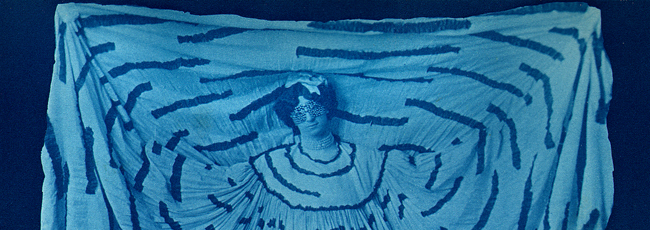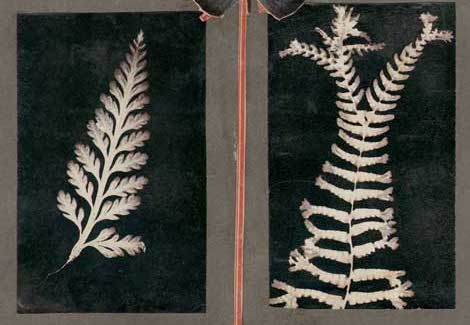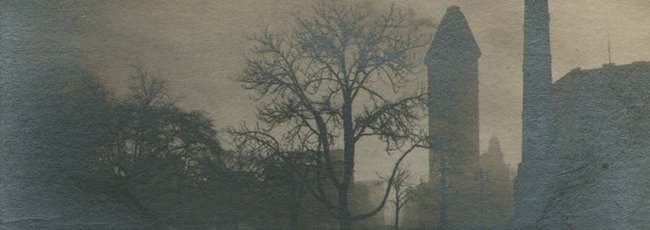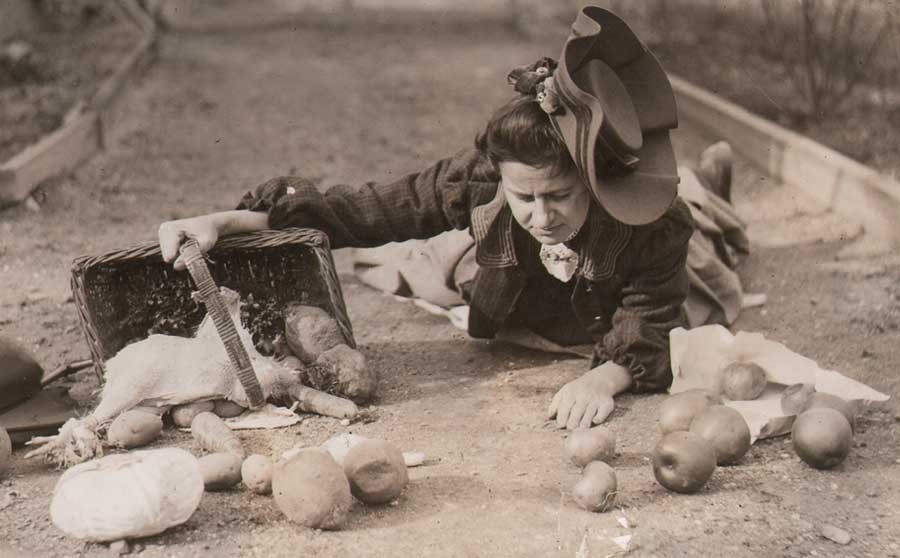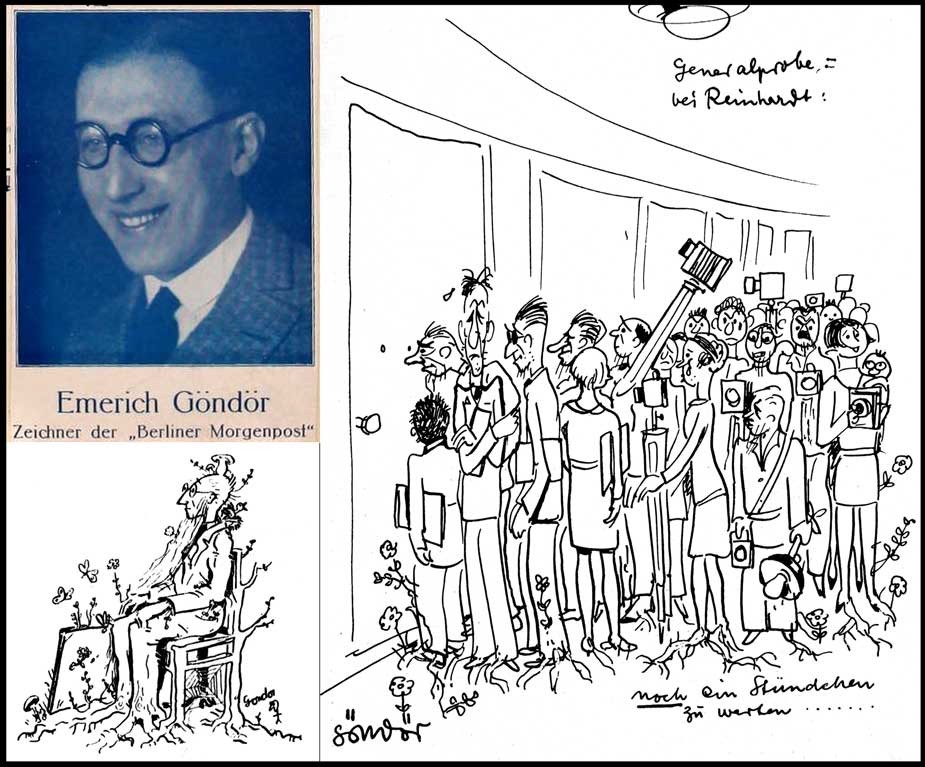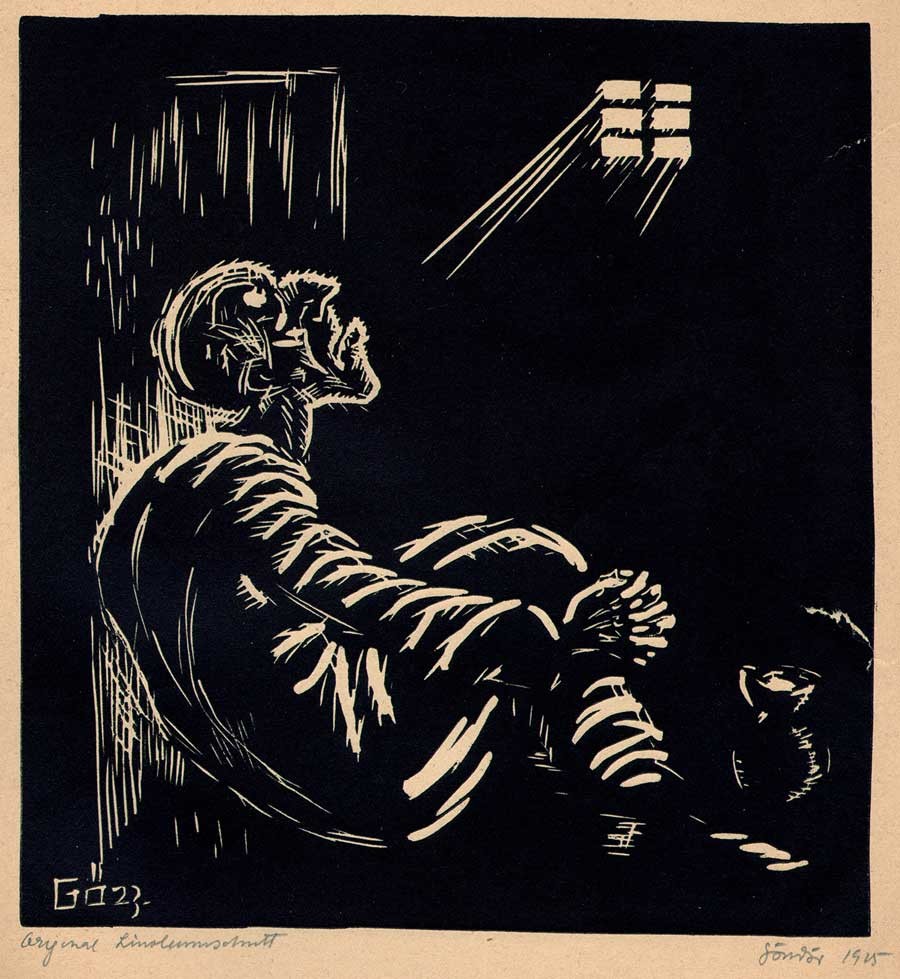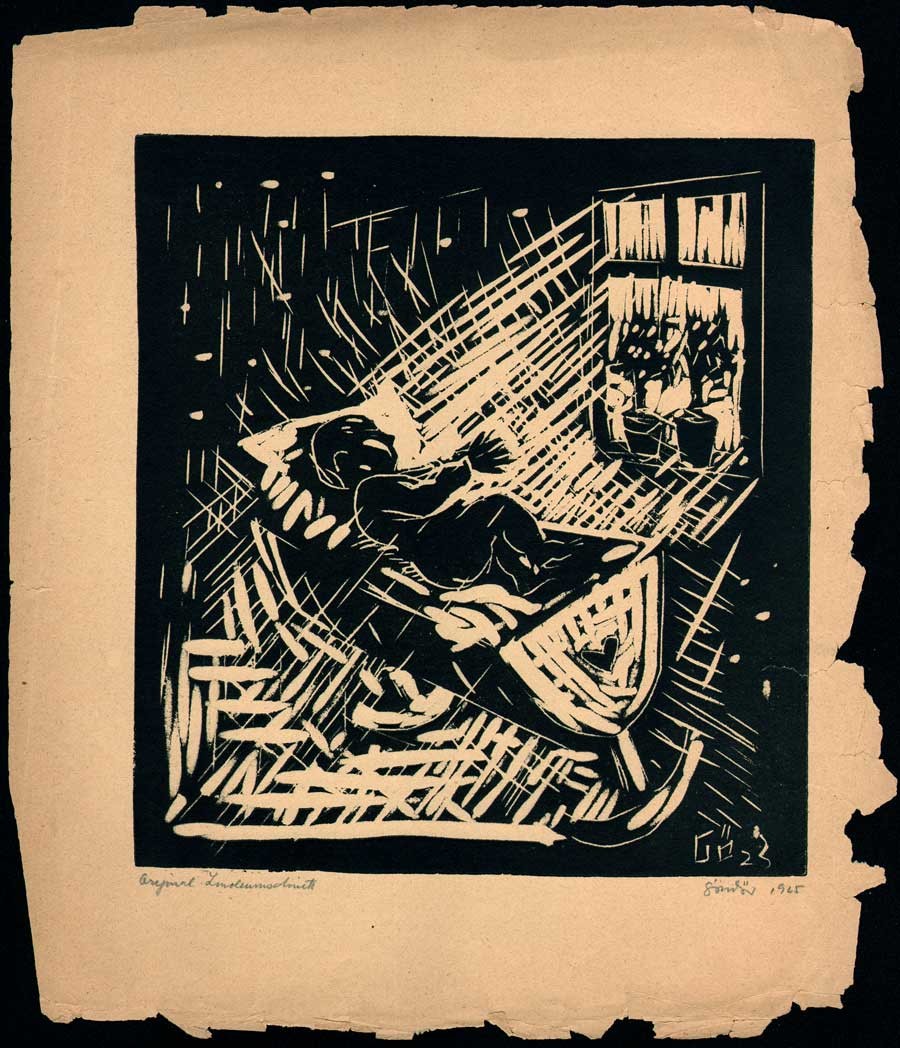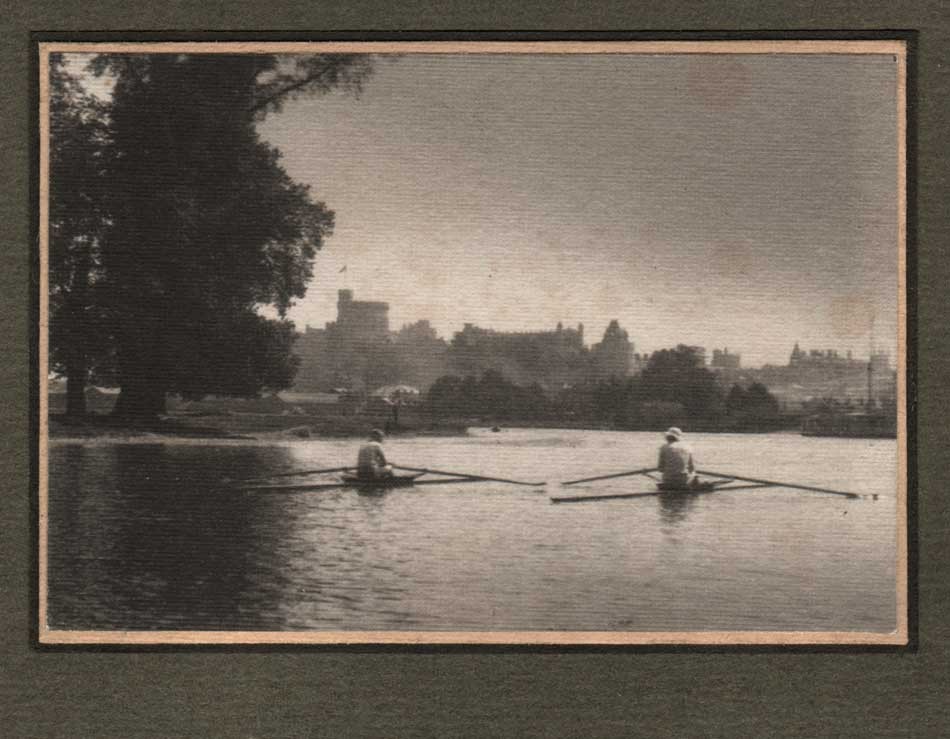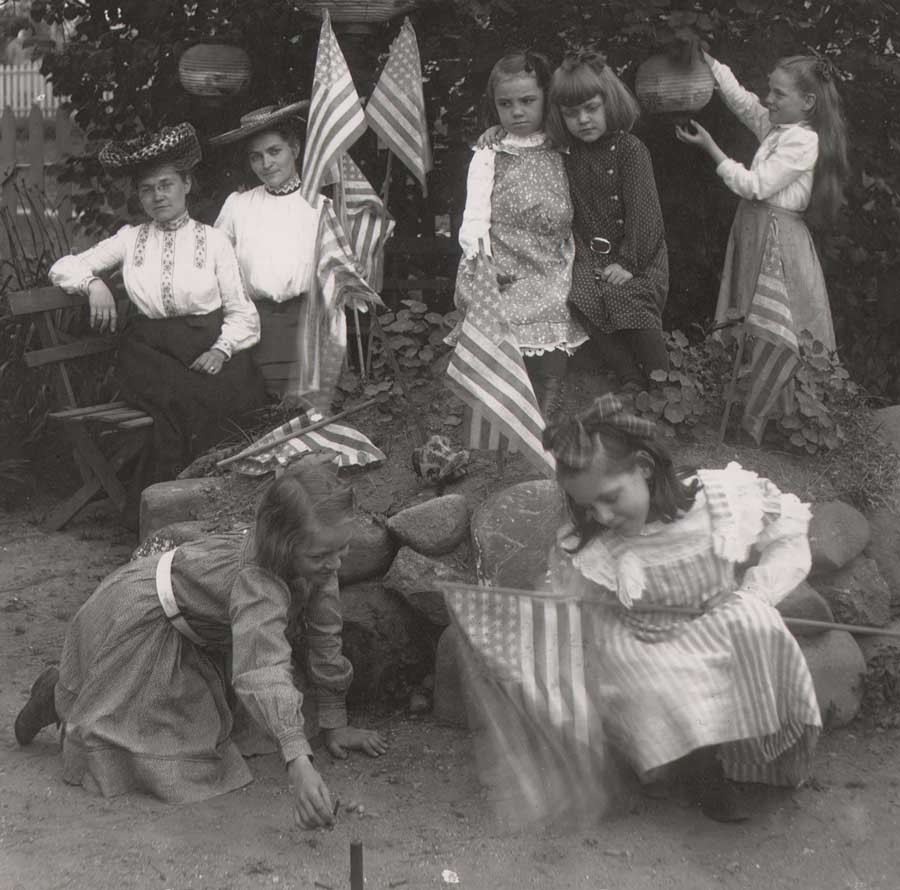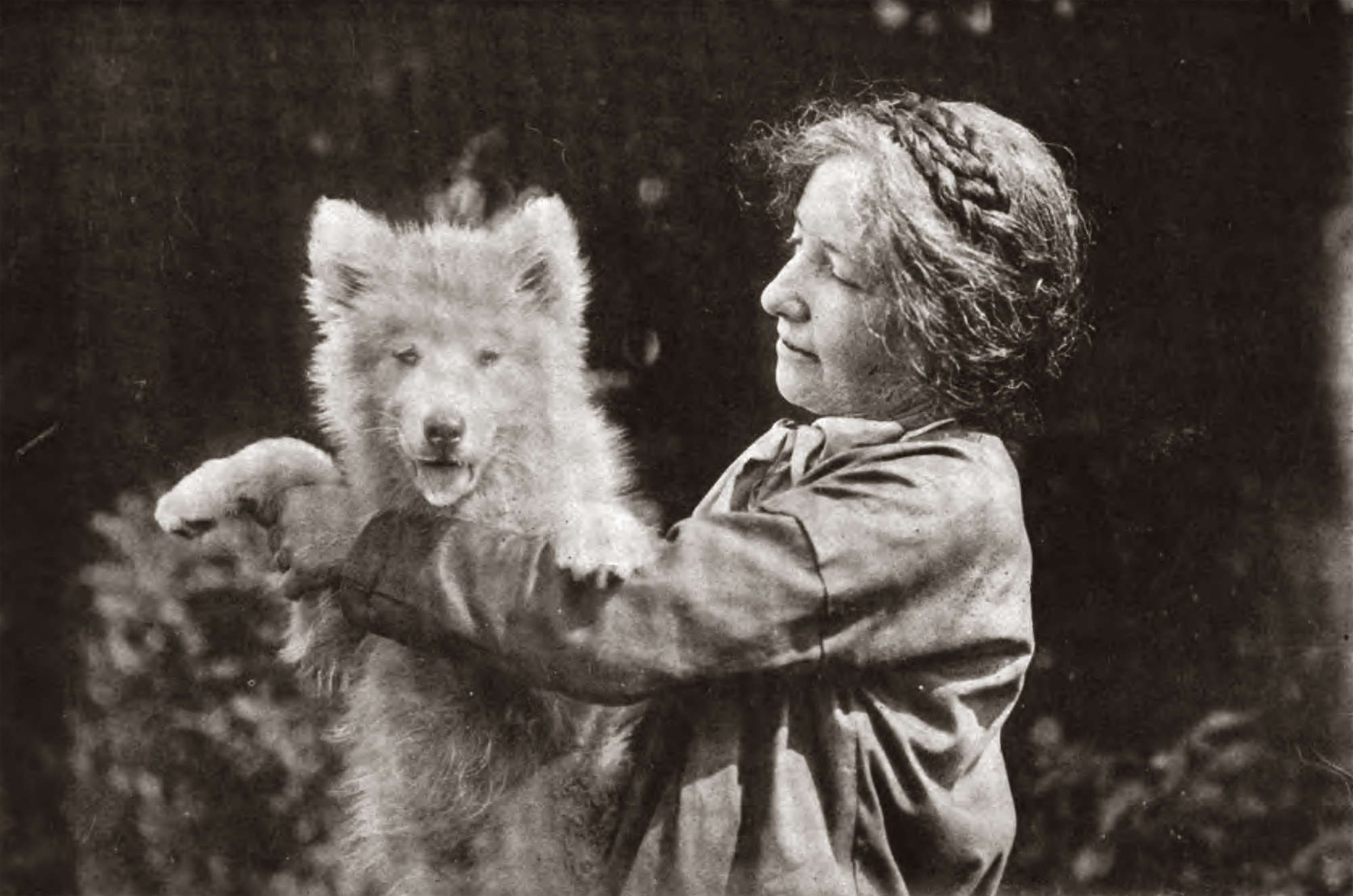If the story is to be believed, the contents of a mystery trunk the artistic passion of yet another unknown early 20th Century photographer have been saved once again in the name of photographic collecting. The evidence was several hundred photographs tucked inside:

Detail: “Japanese Hill-and-Pond Garden Island” (at Brooklyn, New York Botanic Garden): ca. 1920-25: Unknown Brooklyn photographer: gelatin silver: 8.8 x 11.4 cm | 12.6 x 17.3 cm cream-colored, photographic paper stock: from: PhotoSeed Archive
“The dealer had bought a trunk from an estate of a lady who had passed away.”
A story I’ve encountered before in my online foraging. My offer, in order to keep the archive together, was fortunately accepted, and now share with you a glimpse of some of these fruits.
Typically, when photographs enter this collection, initial research on origins and other factors are made and then set aside-often for years- until more deductions can be made or oftentimes additional primary source material percolates into that vast library we all humbly know as the public Internet.
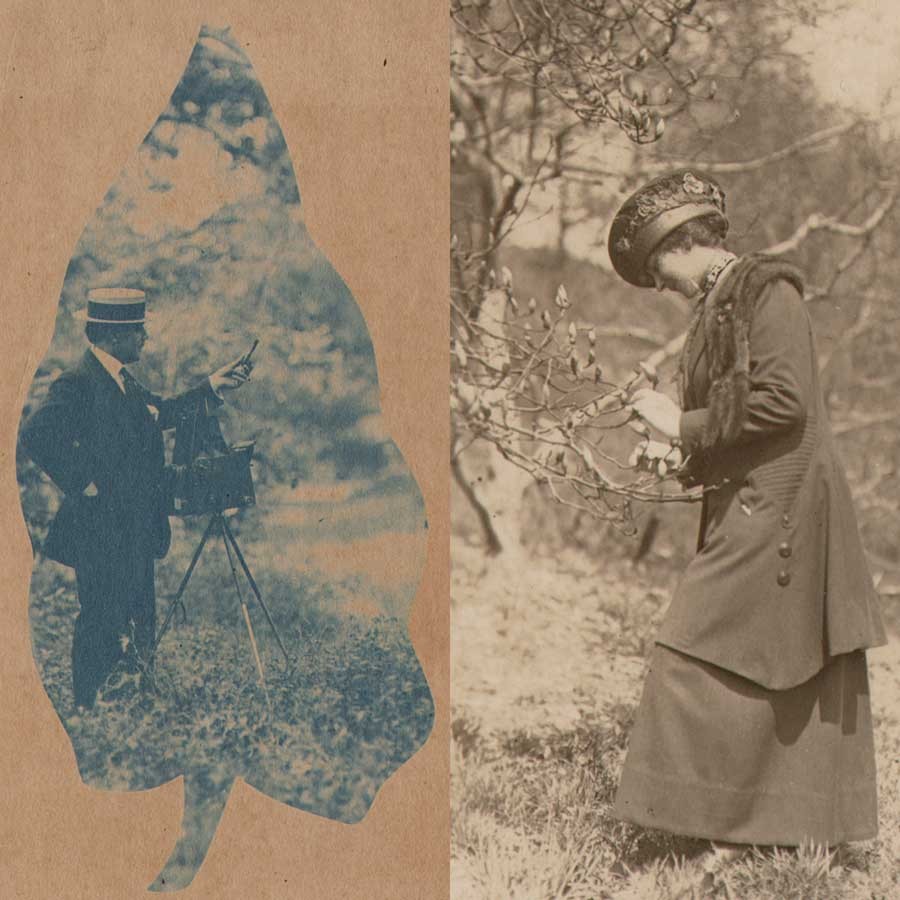
Husband & Wife? L: Detail: “Photographer in Boater Hat Behind Graflex Camera”: ca. 1910-1920: Unknown Brooklyn photographer: cyanotype: 11.2 x 5.2 cm | 14.6 x 8.2 cm: image printed within leaf shape on thin cream-colored paper: R: Detail: “Woman Examining Magnolia Blossom”: ca. 1910-1920: Unknown Brooklyn photographer: gelatin silver: 11.1 x 7.3 cm | 17.1 x 10.5 cm: both from: PhotoSeed Archive
But exceptions, at least in my world, always exist. For these latest trunk photographs coming to light, my discovery a small portion documenting a place and event celebrating 100 year anniversaries in 2015 were primary motivators in showcasing them now with this post. These were the establishment of the Japanese Hill-and-Pond Garden in 1915 at the Brooklyn Botanic Garden, considered the first Japanese garden created in an American public garden, as well as a small cache of photographs taken the same year at the Panama-Pacific International Exposition in San Francisco, California.

R.B.Tele-Graflex Camera outfitted with Carl Zeiss Tessar lens ca. 1913 (last patent is for June of this year on camera bottom) Manufactured by the Folmer Graflex Corporation, Rochester, New York. The Unknown Brooklyn photographer who took the images seen with this post used a similar Graflex model pictured in the above cyanotype. Lightweight so it could be carried in the field and used on a tripod or hand-held, it features a revolving back so the glass or cut film plates loaded into individual holders could be oriented on the camera back for a vertical or horizontal field of view. The photographer looked through the top of the camera (shown in open position here) and focused on the ground glass inside while bringing the subject into focus by manipulating the bellows (not extended in this photo) using the knob located at the far left of the lens board on lower side of camera. from: PhotoSeed Archive
But there’s more as they say. Many of the photographs: gorgeous little jewels printed directly onto small impressed and ruled pieces of photographic paper which act as mounts-some toned in verdant hues of green for landscapes, blues for seascapes and others beautifully hand-colored, are known to have been taken in the mother of the Brooklyn Botanic Garden itself, the expansive 585-acre Prospect Park designed by Frederick Law Olmsted and Calvert Vaux- Brooklyn’s version of New York City’s Central Park which is celebrating its’ 150th anniversary in 2016.
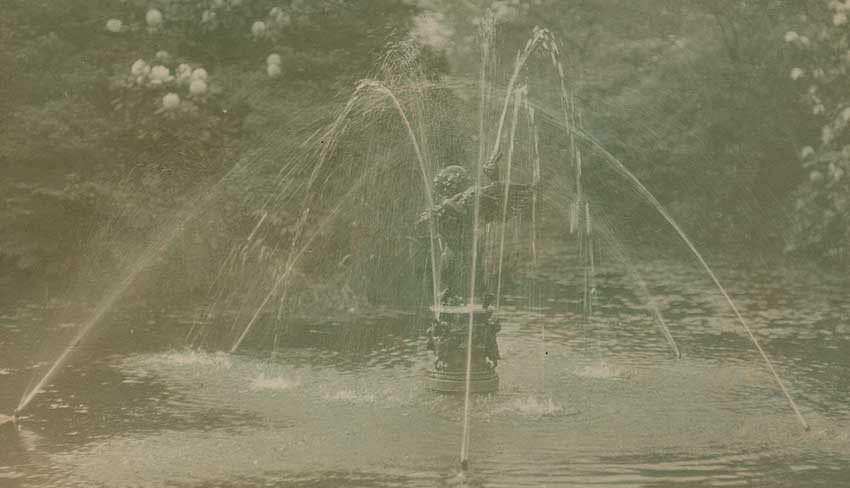
Detail: “Boy and Duck Fountain in Vale of Cashmere”, sculpture by Frederick William MacMonnies, American: 1863-1937 (at Brooklyn Botanic Garden): ca. 1910-20: Unknown Brooklyn photographer: green toned gelatin silver: 8.8 x 11.6 cm|12.4 x 16.9 cm: from: PhotoSeed Archive
Frustratingly, the photographer’s identity responsible for these fruits is presently unknown, other than a cyanotype image included with the collection showing a dapper gentleman believed to be this person standing behind a tripod-mounted Graflex model camera. Photographically printed within the outlines of a leaf while standing in a park-like setting, he wears a straw boater hat while dressed in a suit and raises his hand clenching a pipe towards the scene before him as if to say, “now that’s a scene worthy of my camera”, or something to that effect.

“Spring at Prospect Park”(Brooklyn, New York): ca. 1910-20: Unknown Brooklyn photographer: hand-colored gelatin silver: 11.8 x 9.0 cm | 13.2 x 9.9 cm: from: PhotoSeed Archive
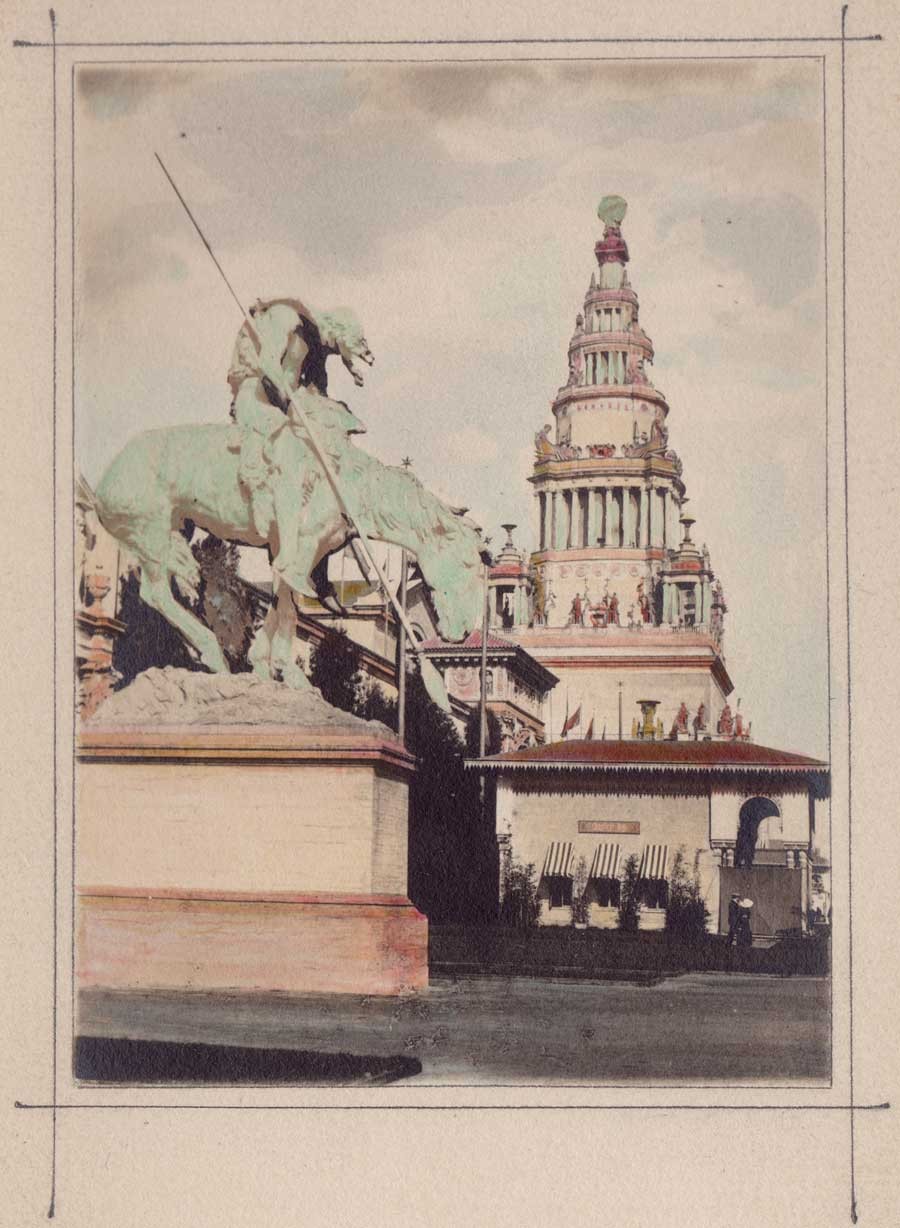
“The End of the Trail”: sculpture by James Earle Fraser (American: 1876-1953) at Panama-Pacific International Exposition, San Francisco, California (Tower of Jewels in background) : 1915: Unknown Brooklyn photographer: hand-ruled & colored gelatin silver: 11.0 x 8.0 cm | 17.1 x 11.5 cm: from: PhotoSeed Archive
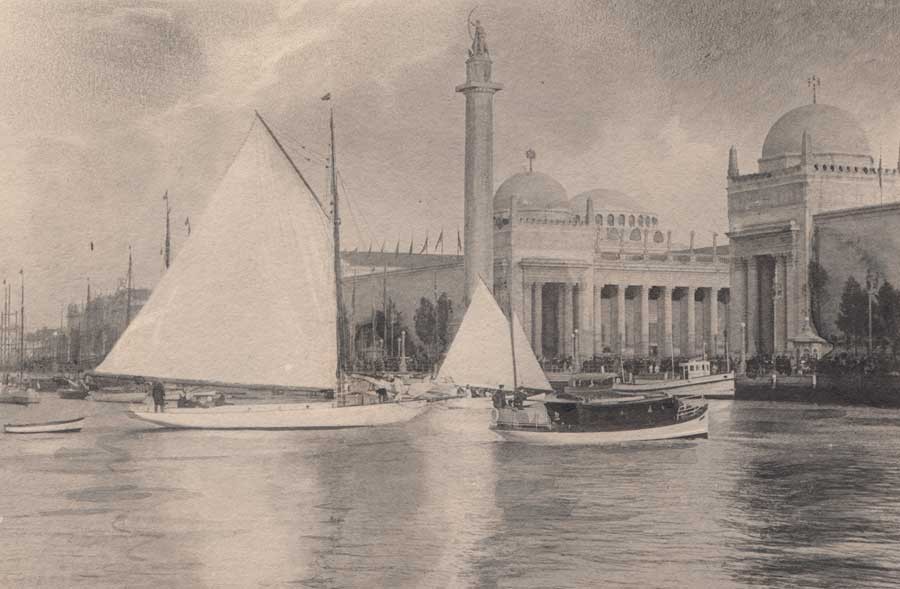
Detail: “Yacht Harbor at Panama-Pacific International Exposition” (Palaces of Agriculture & Transportation in background): 1915: Unknown Brooklyn photographer: gelatin silver with ink wash & photographic border: 7.4 x 11.5 cm | 11.4 x 17.8 cm: from: PhotoSeed Archive
Several other photographs showing an unknown woman, most likely the photographer’s wife, or perhaps the artist herself, (can’t be ruled out) were also included in the trunk photographs. In one, a full-length profile view, she examines a Magnolia blossom in a park setting. (shown here) In another, her gaze is directed towards the camera while wearing an Asian influenced floral dress posing in front of blooming Wisteria vines. The dealer who had initially acquired the photographs, according to the seller I purchased them from, stated they had been acquired from the estate of a woman, (most likely depicted in the photographs) who had (presumably) attended or graduated from Wesleyan Female College, (now Wesleyan College) in Macon, Georgia at the turn of the 20th Century.
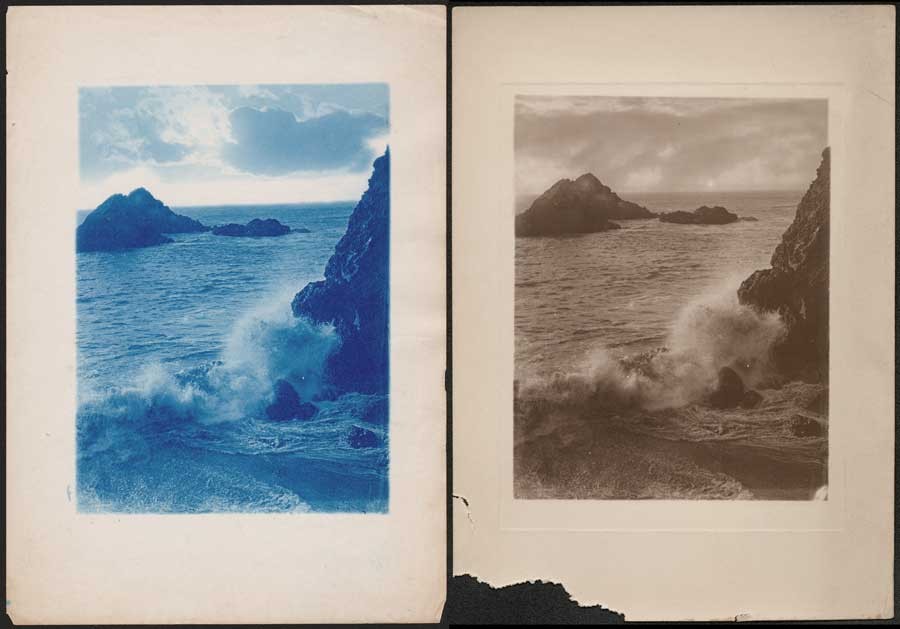
L: “Coastline with Rocks & Wave Action” (possibly California ) :12.3 x 9.0 cm | 17.7 x 12.6 cm: ca. 1910-1920: Unknown Brooklyn photographer: cyanotype with addition of clouds from alternate source photo: R: variant: “Coastline with Rocks & Wave Action” (possibly California) : 11.5 x 9.0 cm | 17.6 x 12.7 cm: ca. 1910-1920: Unknown Brooklyn photographer: gelatin silver: (mouse damage to lower margin): both from: PhotoSeed Archive
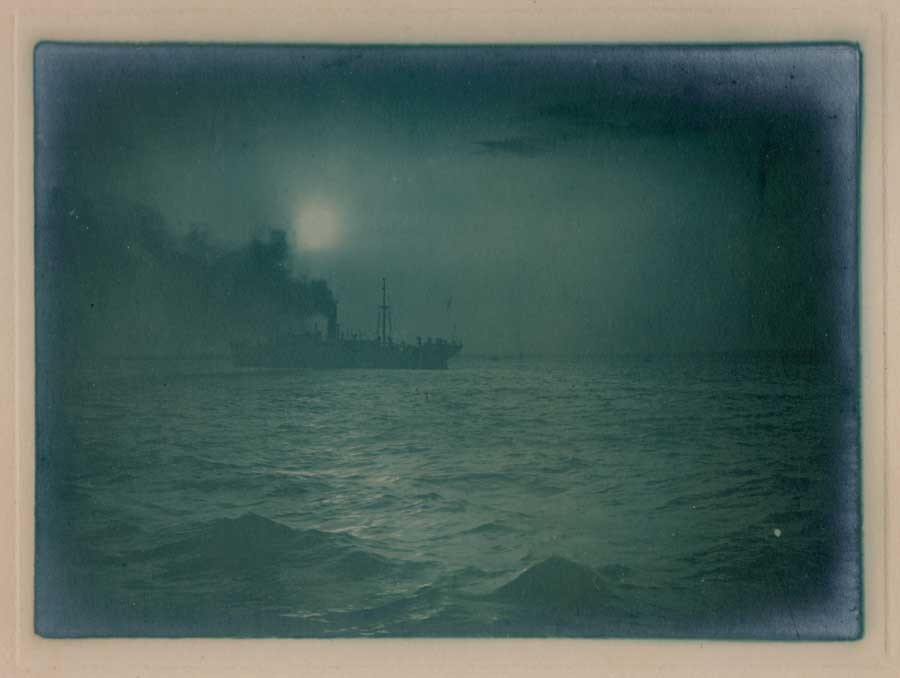
“Steamer in New York Harbor”: ca. 1910-20: Unknown Brooklyn photographer: green toned gelatin silver: 8.4 x 11.6 cm | 12.3 x 17.9 cm: from: PhotoSeed Archive
And even though the photographs ended their life residing in a mystery trunk in the American South, I’ll label them for now as being the work of Unknown Brooklyn, in order to keep their attribution consistent for those searching this archive going forward.
